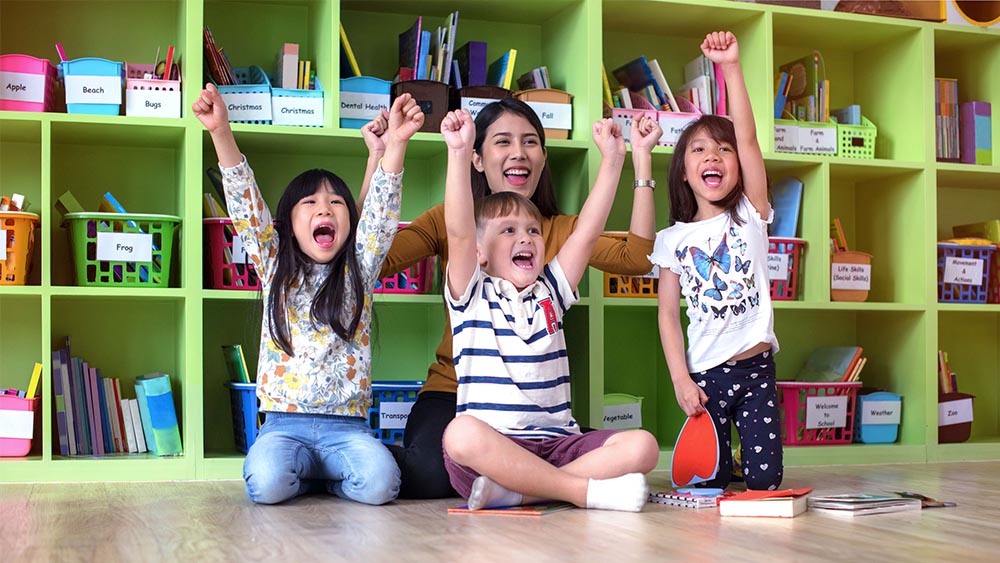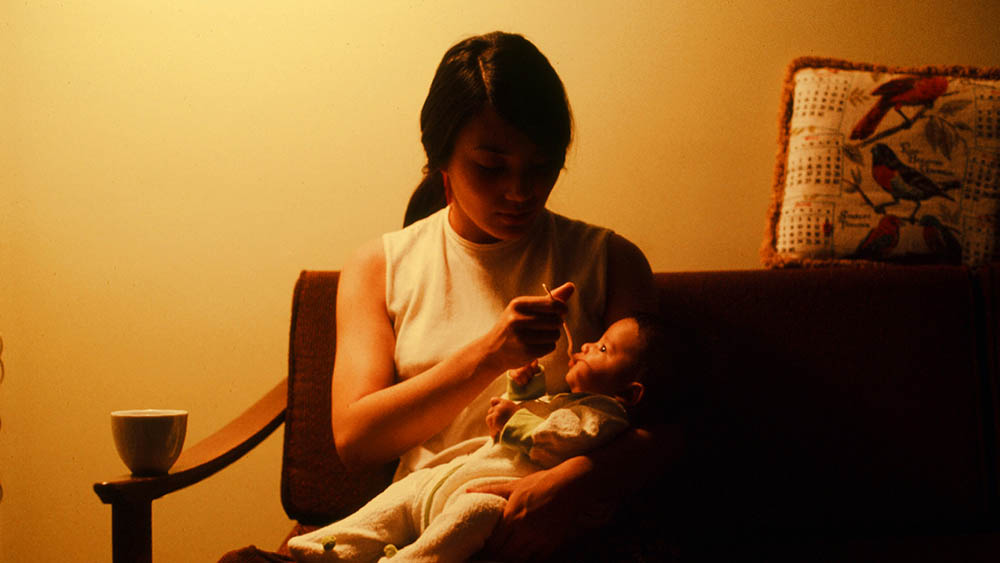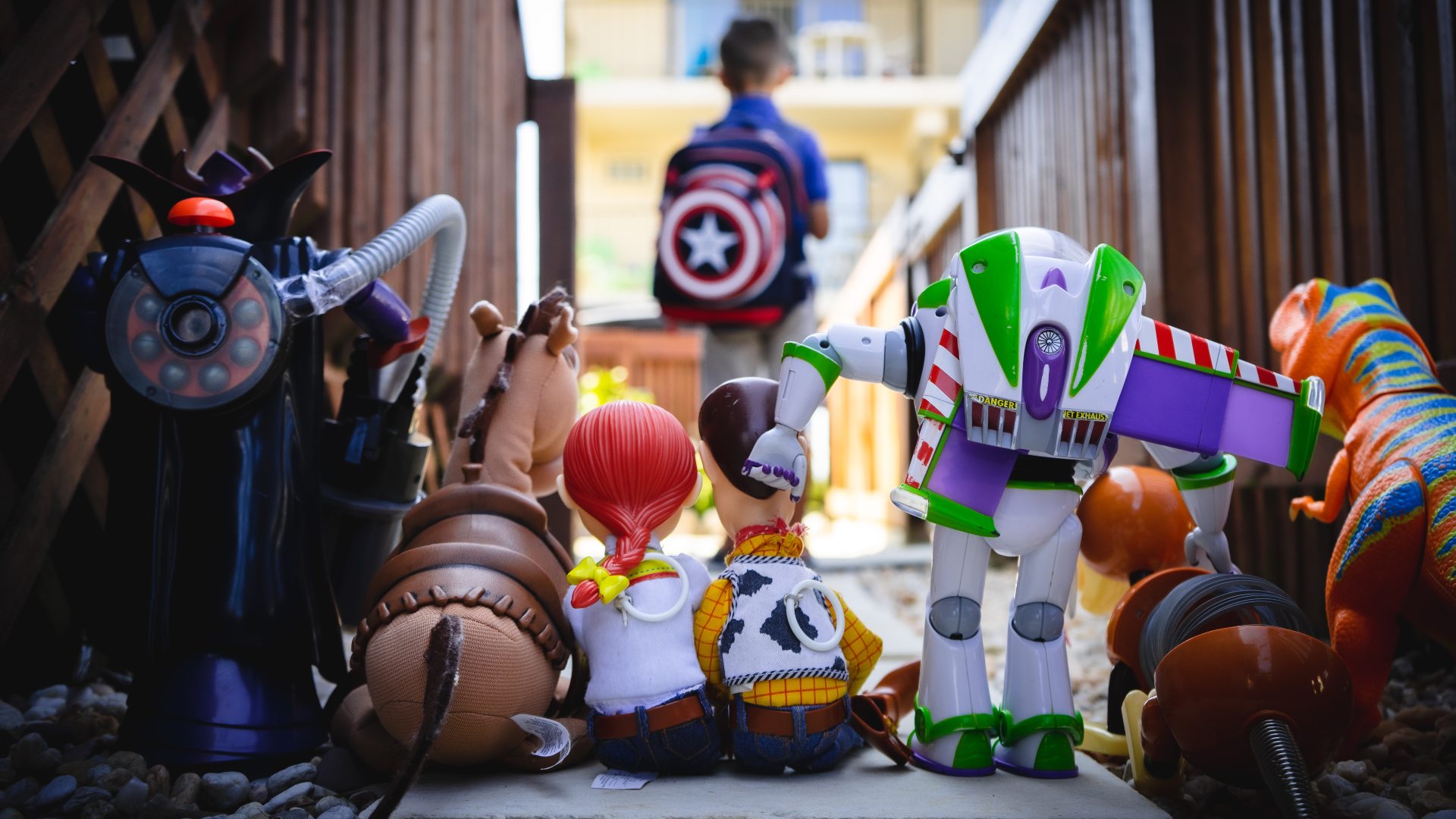Like many Singaporeans, my husband and I intend on
sending our child to preschool at 18 months old. Although we still have a year to go, we started enquiring about slots after our friends preempted us about the long waitlists.
Sure enough, most of the affordable preschools near my house are full until 2026. (That’s what you get for having a child in the Year of the Dragon!). In a panic, we called over 10 schools and booked tours at six places.
While the fee structure and amenities at these schools vary, we’ve found that preschool tours follow more or less the same format. It’s been only a couple weeks since we started, but we feel a lot more prepared now about what we’ll be seeing and what we should ask during the tour.
Feeling clueless? Here’s what to expect:
Before the tour:
Book a slot with the school by either calling them or registering for a tour on their website. Some schools will ask you to register your child for the waitlist before they even call you back; others show you the premises before asking you to register.
Either way, to help the school advise you on the availability of slots, you’ll need to indicate when you intend to send your child to school, at what level, and your preferred start date. For example, Playgroup at 18 months, or Nursery 1 if you’d rather send them when they’re a little older.
Some of the schools I enquired at had open slots for my preferred start dates so they booked a tour for me right away. But at other (popular) schools, I need to wait a few weeks before they’ll even entertain me. Now I totally get why parents register their interest even before their child is born!
Who conducts the tour?
The tour is usually conducted by the school principal or director, although an admin or a teacher may take over if you’re visiting during an especially busy day.
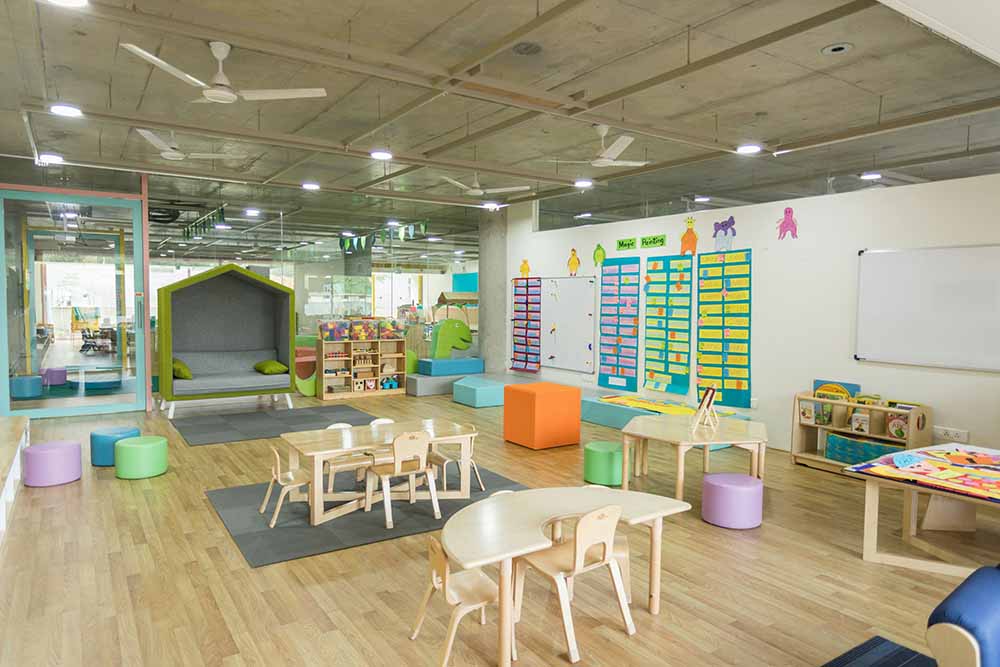 IMAGE: UNSPLASH
IMAGE: UNSPLASH
What you’ll see on the day itself
The classrooms. The tour guide will walk you through the classrooms, starting with the grade level you’re interested in, followed by classrooms for the subsequent grades so you’ll know what to expect if your child were to be enrolled there all the way through K2.
Depending on the premise, some preschools will follow an open concept plan, where “classrooms” are more like corners segregated by bookshelves. Others will follow a more traditional classroom model where children are separated by actual walls and doors. In addition to seeing the setup for seats, you’ll also get a peek at teaching tools, classwork, and children’s artwork displayed in the classroom.
The timetable. You’re probably wondering what a bunch of toddlers do all day in school. Well, that’s what the timetable - often displayed at the check-in area - is for. Don’t be surprised if they start looking the same after a while; all the schools we visited included some standard activities like routine care (diaper changes, toileting), nap time, language, and outdoor play.
It’s in the curriculum where you’ll notice key differences. For example: although all the schools we visited offered English and Chinese, some schools offered an hour of English and an hour of Mandarin every day, while others offered an immersive approach: a full day of Mandarin followed by a full day of English.
You’ll also notice differences in how schools teach language: some will just indicate “English” on their timetable, while others will have separate blocks for “thematic English lesson” and “language and literacy”. Still others will designate blocks for storytelling or for numeracy, while others won’t include them on their timetable at all. Sometimes it’s also a matter of terminology: you might think School A doesn’t teach phonics, while another school does, but maybe they just call it something different. Don’t hesitate to ask your tour guide - especially if they’re the school principal - to elaborate on the timetable. Not only will this give you a better idea of how your child will spend their time, but you’ll also get a sensing of how passionate the principal is about education.
The kitchen and dining area. We took more of a cursory glance at this than anything else, but oftentimes this is where the tour guide will indicate whether they have an in-house cook or use catered food. You’ll also get a peek at the menu and the methods by which schools document the students’ allergies.
About that menu…Generally, schools offer three meals: breakfast, lunch, and tea break, with fruits or milk in between. Most will indicate items like rice cereal or wholemeal bread but won’t specify the brands unless you ask. While the menus started to look repetitive after awhile, my husband and I noticed that some menus served things like sweet potato for breakfast, while others served Honey Stars. If the latter is a no-no for you, you can also ask the teacher to what extent the school allows you to bring your own food or for your child to skip certain meals.
Any play areas. Play is a big part of preschool, so check out the play areas as well - this includes playgrounds, indoor gyms, and “discovery corners” where children are encouraged to engage in imaginative play. Make sure you check out the toys as well! Some schools we explored were big on open-ended, Montessori-style wooden toys, while others used more conventional plastic blocks and toy cars. One school we looked at had barely any toys on display, but it wasn’t that they discouraged kids from having fun - they were just more focused on doing crafts and exploring elements of nature (leaves, branches) for play instead.
The fee structure. This is often the tipping point for parents, and for good reason. Some schools we visited offered fees as low as $300 a month after subsidies, while others cost more than five times that amount. There will be differences in the cost of insurance, uniform, and the cot (FYI, many schools require you to purchase a small mattress that your kid can use until they finish preschool). Remember to ask if they offer discounts for early bird registration!
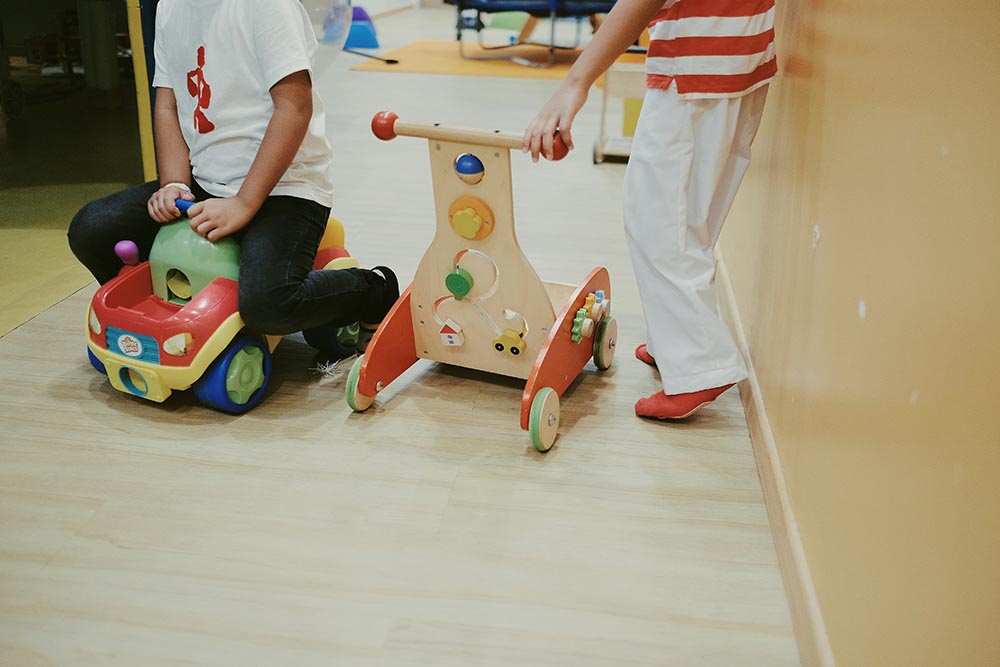 IMAGE: UNSPLASH
IMAGE: UNSPLASH
Tips for making the most of your tour:
Go when classes are in session. As much as possible, avoid tours on Saturdays, close to school holidays, or after pickup time because classrooms will be more or less empty. The best time to go is in the middle of the day, when you can see how happy the children are and how well the teachers engage them. If the school uses an open-concept plan, you’ll also be able to gauge the noise level and how congested it feels. Some places feel lively and fun; others just feel crowded and chaotic.
Look at classwork. These are often displayed on the wall. We were greatly impressed by how one school encouraged storytelling and imagination in their classwork, while another impressed us with its Chinese penmanship lessons. Yet another school was very deliberate in showing us how their K2 programme prepares students for Primary 1. While all that is a few years away, it gave me a glimpse of what my 18-month-old could look forward to should she stay in that school for the next five years or so.
Prepare lots of questions.
Here are a few that we asked:
- What is your approach to nap time? (Many schools encourage teachers to stick closely to the parents’ sleep routines for younger kids, so if that’s important to you, make sure you ask about it!)
- How do you update parents on our children’s school days? How often do you provide pictures or updates?
- How do you handle separation anxiety, especially during the first few weeks of drop-off? Do you encourage parents to stay with the child or is it better for us to drop them off and go?
- What is your approach to teaching?
- What’s the protocol if a child gets sick?
- Are there any take-home activities, i.e. homework? How often and to what extent are parents expected to partake in these activities?
- What kinds of excursions and learning journeys do the kids go on?
- Do the kids have performances? How often and when do they occur?
- How do you handle kids who are acting out? What’s the protocol if my child comes home with an injury? (e.g. gets bitten by another child).
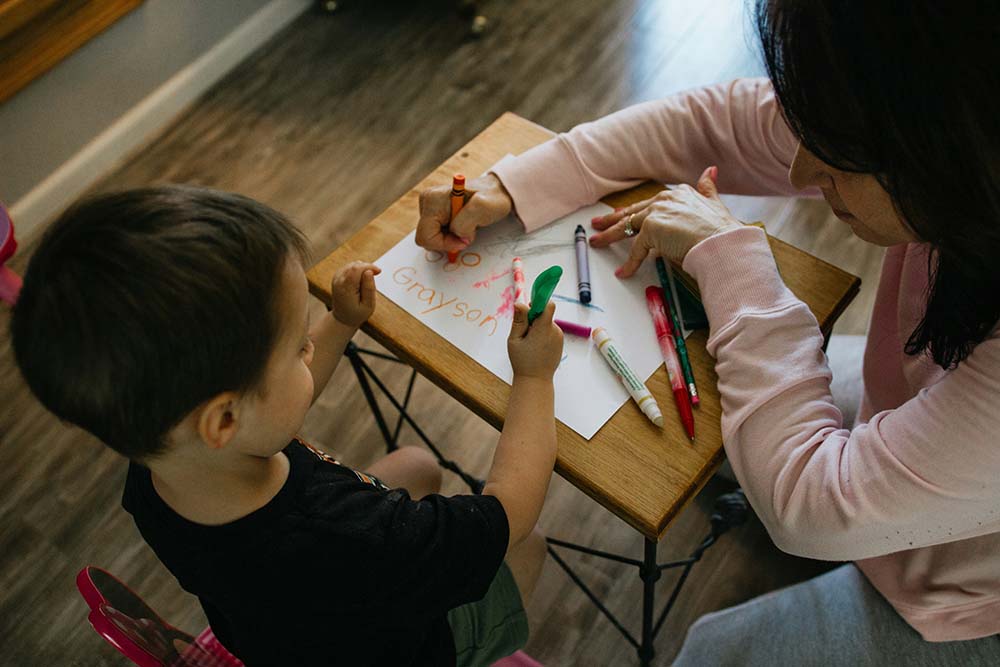
IMAGE: UNSPLASH
Believe it or not, all of the above takes an hour or less. And now comes the important part: deciding on a school for your child! After the tour, ask them to email you the school brochure, timetable, fee structure, menu, and registration form so that you can compare them against those of other schools.
But if I’m being honest, these schools all start sounding the same after a while. Listen to your gut instinct while you’re doing an in-person visit! Some schools, no matter how good they sound on paper, won’t pass the vibe check. Others will win you over even if the website looks a little janky.
If all else fails, consider the most practical factor of all: cost and distance from your home. Can you comfortably afford this preschool? Also, can you see yourself doing drop-offs and pickups at this school for the next few years? School arrival tends to start at 7:00am, so if you can imagine yourself dropping off your kid at that place before work without having to take a bus ride or to make a huge detour, that’s half the battle won.
For the latest updates on Wonderwall.sg, be sure to follow us on TikTok, Telegram, Instagram, and Facebook. If you have a story idea for us, email us at [email protected].
 IMAGE: UNSPLASH
IMAGE: UNSPLASH IMAGE: UNSPLASH
IMAGE: UNSPLASH







